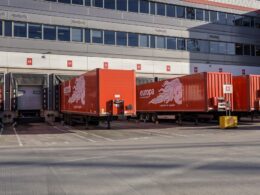by Alex Buckley, General Manager at DispatchTrack for EMEA and APAC Operations.
Change always feels risky. And when you’re changing systems that you rely upon for basic business functions like delivering to customers, those risks can quickly start to seem especially daunting.
For much of the last mile logistics industry in the UK, decisions about whether to stick with on-premise (on-prem) software deployments or update to cloud-based delivery management technology represent exactly the kind of daunting change we’re talking about. Many delivery organisations have traditionally relied on on-prem software deployments, and they have to weigh up the pros and cons of switching to the cloud.
Pros and Cons of On-Prem vs SaaS
Choosing between cloud-based delivery management software and on-site technology deployments can be a challenge, in part because there are legitimate pros and cons to both.
- On-Prem Pros: For most businesses, on-prem is the path of least resistance when you’ve been relying on these kinds of deployments for years. On-prem technology also gives you more control over your data and security practices—though this can be a double-edged sword if you don’t have experienced and trustworthy IT staff at your disposal.
- On-Prem Cons: Cost is the big one here; When you own your own equipment, you have to pay for maintenance, upgrades, and hardware replacement on a regular basis. At the same time, scalability can be a challenge; if you need more processing power to keep up with peak season demand, there’s no way to get it other than laboriously installing more servers on-site.
- SaaS Cons: The most frequently cited cons to SaaS software a few years ago (cost, security, and data privacy) have mostly been addressed as SaaS platforms have evolved. At the same time, there is change management to think of, and it will involve less physical control over your data in some ways.
- SaaS Pros: Ultimately, SaaS adopters find themselves with reduced or eliminated costs for on-site maintenance, better security, easier scalability, and faster deployments of new upgrades. But perhaps the fundamental pro of the model is that it virtually ensures connectivity, helping to reduce data and process silos along with all of the issues they can cause.
How to Future-Proof Your Deliveries with SaaS
In some ways, the biggest downside to switching from on-prem to SaaS is the question of change management. This isn’t something to be taken lightly. At the same time, when you take a step back, SaaS really has an advantage there, too.
Delivery management is, by its nature, a highly-connected activity. Success depends on your ability to take in order data from a POS or ERP system, generate delivery routes that account for your current driver and fleet capacity, communicate with customers in real time, and stay connected to drivers even while they’re out in the field. It’s a delicate balancing act, and if even one area becomes disconnected from the rest, there’s the potential for late deliveries, confused customers, and a complete lack of delivery transparency.
Because modern technology evolves so quickly, connectivity and interoperability across functions is a moving target. When you’re stuck with an inflexible deployment of on-prem software, it can be impossible to keep up. With SaaS platforms that are being constantly updated, there’s no need to worry that you’ll suddenly be cut off from your integration with your ERP, or that you’ll suddenly be behind on security updates, making it impossible to send messages to customers.
In short, adopting a SaaS delivery management solution may be a big change—but it’s a change that only has to be made once in order to future-proof your delivery management process.
How to Overcome Challenges in Digital Transformation of Last Mile Logistics
SaaS may be the best option for last mile delivery organisations, but that doesn’t mean any old SaaS platform will do. To minimise the downsides and accentuate the positives of adopting SaaS technology for delivery management, there are a few best practices you can follow:
- Prioritise easy-to-use software: The easier the platform is for new users to get the hang of, the less disruptive the changeover will be.
- Seek out “cloud-native” platforms: Something that’s been built on the cloud from day 1 will generally be more stable and adaptable than something that hasn’t.
- Ensure robust integration capabilities: Last mile logistics is all about connectivity. When your SaaS solution can easily share data bidirectionally with other solutions, you can avoid data silos and stay agile.
- Seek out true scalability: All cloud platforms are scalable in theory, but there can be big differences in practice. Look for a solution that can easily route as many stops as you can throw at it.
When it comes to last mile logistics, customer expectations are going to keep ratcheting up, and operational complexity shows no signs of slowing. This growing complexity makes SaaS technology a clear favourite for powering the successful evolution of your logistics operations.













